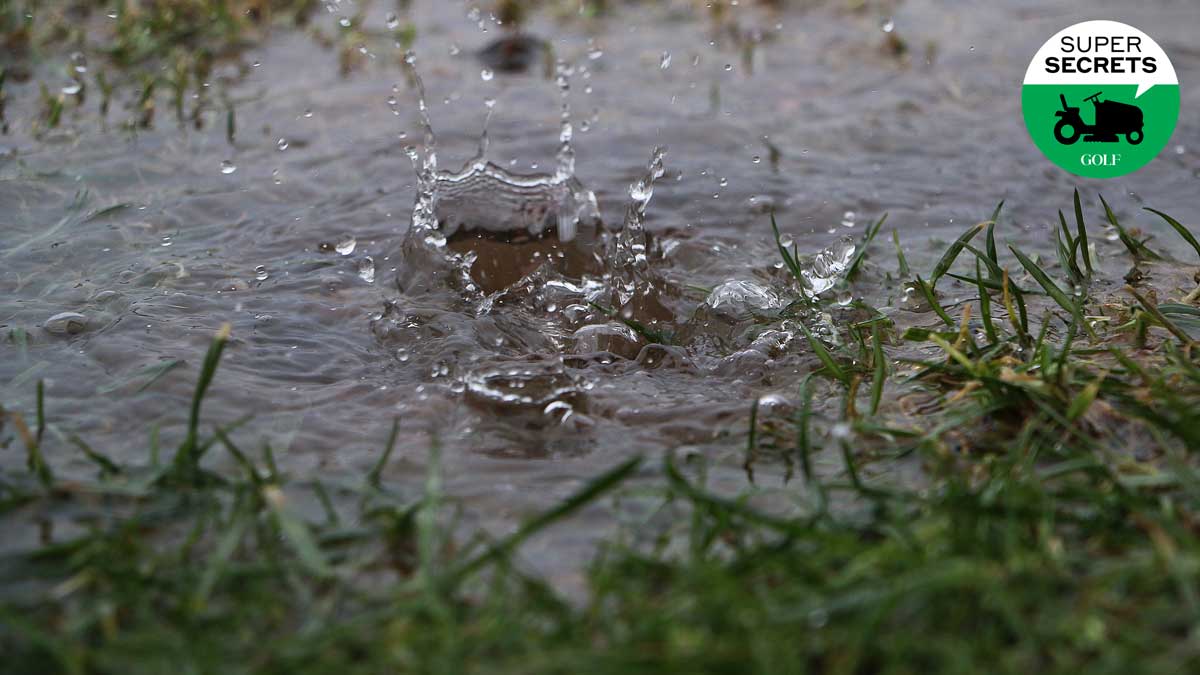When it rains it pours, and if the heavy stuff keeps coming, it can give superintendents — and homeowners — pause.
All grass needs water, of course. But too much of a good thing can be a bad thing. Rick Tegtmeier, the director of grounds at Des Moines Golf and Country Club, in Iowa, is a 41-year member of the Golf Course Superintendents Association of America.
In a winter that has brought torrential storms to large swaths of the country, we asked him for tips on dealing with soaked turf.
1. Knowing when to mow
It’s OK to mow wet turf; supers do it all the time. But there is a point when grass becomes too soaked to cut. Luckily, there are telltale signs. If your mower is creating ruts or mud tracks, that’s your cue to stay off and let the turf dry out.
2. Staying sharp
Mowing with dull blades is a good way to do damage, as it tears the grass instead of cutting it. It sodden conditions, it can be even worse as you run a risk of pulling up entire chunks of turf. At Des Moines Country Club, Tegtmeier sharpens his equipment three times a season. That’s not a bad idea if you can swing it at home.
3. Reading prints
When the ground is sopping, you’re bound to leave footprints. But not all footprints are equally concerning, Tegtmeier says. If your marks are only showing up in the grass (as often happens when the grass is long), that’s not a problem. If, on the other hand, your prints are going deeper and leaving indentation in the soil, that’s another sign to keep off.
4. Applying common sense
After heavy rains, your grass should not be thirsty, so no need to water. Nor is this the best time for it to eat. Applying fertilizer to wet grass is “not a great practice,” Tegtmeier says, because many fertilizers need to be watered in. Applying fungicides is another story. That’s fine in wet conditions, but it’s best not to apply them when the rain is falling as (unless the label advises otherwise), you don’t want the product to get washed off. In most cases, Tegtmeier says, the bigger worry with applications is the application equipment. If it’s heavy, it will leave deep tracks.
5. Other precautions
When you mow wet turf, the clippings tend to clump. Try not to leave those damp clusters on your lawn, as they can smother grass and become a breeding ground for all kinds of other problems. It’s also wise to clear those clumps from the sidewalk and driveway so they don’t block drainage around your home or wash into the sewer system, where they don’t belong.
